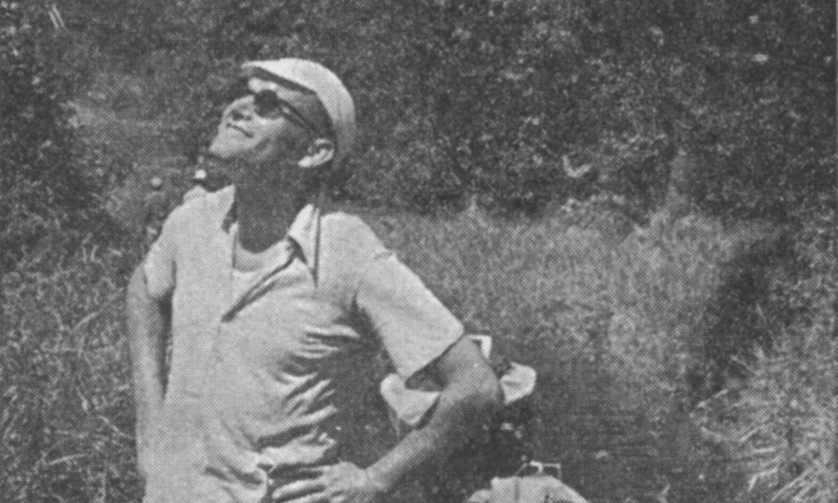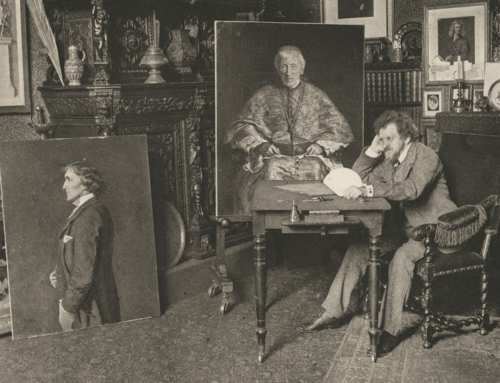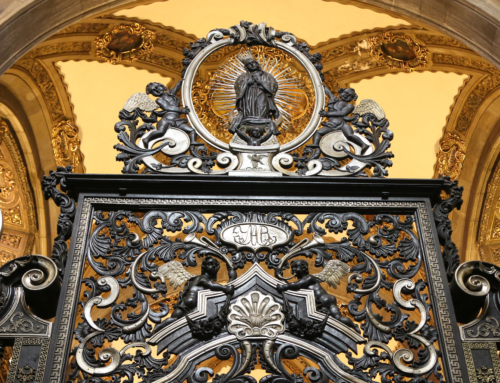Spiderman, not St. Stephen. Batman, not St. John the Baptist. The Teenage Mutant Ninja Turtles, not the North American martyrs.
I grew up knowing plenty about both superheroes and saints, but the comic book characters I dressed up as each Halloween were more real to me than any saint the Church honors tomorrow on All Saints’ Day.
On too many holy cards and in too many stained glass windows the saints all looked the same: doe-eyed, fair-skinned, more angelic than human. Their life stories melded together into a single, fantastic shape. They all seemed to have discovered some secret way to get on God’s good side, as He made Himself known to them in extraordinary ways—often performing all sorts of wild miracles for and through them—and they made it effortlessly to Heaven. The end.
Into my adult life, the saints continued to feel distant. What I heard in homilies and read in biographies served to encase them in a thick ice of piety. I did understand that they suffered trials and temptations, but their imperviousness to them rendered them impervious to me. Even trying to imagine how they spoke and behaved while alive, I couldn’t see how they would make for interesting dinner company. And forget about meeting a saint at a bar for a beer after work.
One thing which helped correct my flawed perspective was realizing that saints had walked the earth during my life. Blessed Teresa of Calcutta died when I was in high school, Pope Saint John Paul II during my first year of grad school. After they departed from this world, I slowly arrived at a greater awareness of what holiness—real holiness, not stylized depictions of it—looked like. These saints unsettled my assumptions about sanctity. In their backgrounds, vocations, and life experiences, these two magnanimous figures were quite distinct from one another. And as any number of stories about them reveal, they weren’t boring. They were funny. They did normal things. They loved. They forgave. They suffered like the rest of us (actually, much more than most of us likely will). And yet they cultivated heroic virtue, as has been formally recognized by the Church. So what had they gotten out of life—or put into it—that I was missing?
In effect, the saints show us what sameness and monotony look like. Except its ours, not theirs, that’s revealed.
Individualism is the hallmark of contemporary Western culture—and the more highly it’s valued, the less we see it authentically achieved. The world sells us on a cheap brand of individualism, and we lose ourselves in the transaction. We are left with “cures that don’t cure, blessings that don’t bless, and solutions that don’t solve,” as G.K. Chesterton puts it. Do you want to meet people who are truly themselves? Seek out the saints. Do you want to truly be yourself? Strive to be a saint. As Frank Sheed points out, only the pursuit of holiness offers us relief from the monotony modern individualism produces in and around us:
…men are in their essential personality irreducibly diverse: but sin blots out the distinctions and reduces the diversity: sin drains out the color of the man (which is his own and inimitable) and replaces it with the color of sin which is common property: all sinners look less like themselves and more like one another. Saints are intensely themselves.
When we are persistently self-seeking (as opposed to being habitually self-giving), we do not find ourselves, but deform ourselves.
Intensity is a defining mark of the saint. As it turns out, I don’t think I’d have the stamina to keep up with the exuberance of a saint’s dinner conversation. Again, as Sheed recognizes, sin is to blame: “…sin, being a following of the line of least resistance, inevitably lessens vitality: it takes no more vitality to go with the stream of inclination than with any other stream: but to go against it, as the saint does, demands intense vitality.” Sin dulls, whereas virtue sharpens.
How do saints attain this vigorous, holy selfhood? For starters, the saints truly become themselves by becoming true with themselves—and with God. Saints are more honest about their utter weakness, frailty, and sinfulness. They don’t try to hide it from themselves or from God. They are bold in their humility, submitting to Christ the key to every door of the heart, holding back nothing for themselves.
A fire can turn anything into itself if it is hot enough. The saints are sinners who aren’t afraid to walk straight into the Divine Fire—source of true love’s heat—to be purified and consumed and, in so doing, to be made like Him (cf. 1 Jn 3:2).
All you saints in Heaven, from the most renowned to the most obscure, pray for us!
✠
Image: A young St. John Paul II







